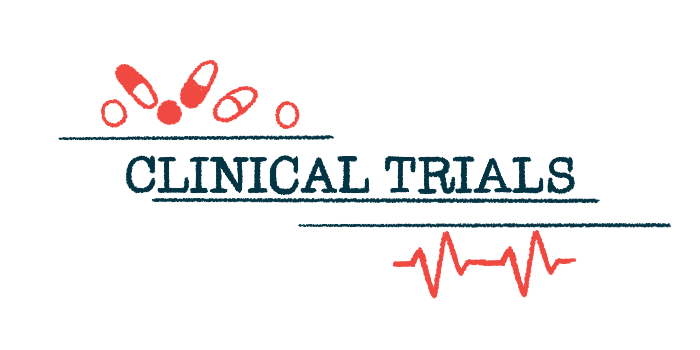FDA OKs clinical testing of new FA gene therapy SGT-212
Solid Biosciences planning Phase 1b trial in adults for later this year

The U.S. Food and Drug Administration (FDA) has given Solid Biosciences the go-ahead to start clinical testing of SGT-212, the company’s novel gene therapy candidate for Friedreich’s ataxia (FA).
According to Solid, SGT-212 is the only experimental gene therapy of its kind to target “both neurologic and cardiac manifestations” of FA.
“SGT-212 offers a truly differentiated approach to addressing FA with the potential to treat the full spectrum of symptoms, and we hope to meet each patient where they are in their FA disease course,” Bo Cumbo, Solid’s president and CEO, said in a company press release.
With FDA clearance secured, Solid is planning in the second half of this year to start a Phase 1b trial that will test up to three different dosing groups of SGT-212 in adults with FA. Patients will be followed for up to five years following the administration of the gene therapy, with the main goals of evaluating treatment safety and tolerability.
SGT-212 designed to target both cardiac and neurologic symptoms of FA
FA is caused by mutations in the FXN gene, which provides instructions to make the protein frataxin. Deficient frataxin protein in the body causes issues with mitochondria, structures needed to produce energy in cells. The resulting mitochondrial dysfunction drives the symptoms of FA.
The overarching idea behind gene therapy for Friedreich’s ataxia is to deliver a working version of the FXN gene to the body’s cells, thereby facilitating the production of functional frataxin protein and ultimately alleviating disease symptoms. This is easier said than done, however, in part because FA affects many different systems throughout the body, including the heart and the brain. To be optimally effective, a potential gene therapy would need to deliver just the right amount of its genetic payload to each of these different systems.
To address this obstacle, SGT-212 employs a dual route of administration: Using viral vectors as carriers, the therapy is given into the bloodstream, or intravenously, designed specifically to target the heart; it’s also injected directly into part of the brain called the dentate nuclei, so it can deliver the gene to the cerebellum — a brain region that’s essential for coordination. Delivery into the brain uses an MRI-guided device.
We believe a dual route of administration targeting multiple systems is the best approach in development to directly address the neurological implications that profoundly impact the everyday life of patients, while simultaneously targeting the cardiac manifestations that play a key role in more progressed disease.
“Over the years, we have tested several candidates using different methods of administration and have conducted multiple [nonhuman primate] studies, some of which extended out to a year,” Cumbo said. “Based on this research, we believe a dual route of administration targeting multiple systems is the best approach in development to directly address the neurological implications that profoundly impact the everyday life of patients, while simultaneously targeting the cardiac manifestations that play a key role in more progressed disease.”
According to Cumbo, “SGT-212 has been intentionally designed to enable highly targeted delivery of our gene therapy to both the dentate nuclei and cardiac tissue.”
Cumbo noted that the application seeking the FDA’s okay to start clinical testing “was supported by a robust preclinical package demonstrating safe transduction [gene transfer] and frataxin expression in these target tissues, with significant restoration of neurologic function and reversal of the cardiac implications of the disorder in mice.”
The planned Phase 1b clinical trial of SGT-212 will be the first in humans, and open-label, meaning both researchers and participants will know the treatment patients are given. The trial will be aimed at dose-finding, per Solid.
FARA calls clinical testing of FA gene therapy candidate ‘a significant milestone’
Jennifer Farmer, CEO of the Friedreich’s Ataxia Research Alliance, known as FARA, said that bringing this new therapy into clinical testing is a “significant milestone.”
“Through our work with individuals living with FA and their families, we know they seek therapies designed to treat the debilitating neurologic symptoms that people living with FA face day to day, such as loss of ambulation and coordination, dysarthria [difficulty swallowing], along with … life-shortening cardiac disease,” Farmer said.
Farmer noted “there is still unmet medical need for our patient community,” adding that”SGT-212’s unique, precision approach targets both the cerebellum and cardiac tissue using a dual route of administration, and in doing so, aims to address the underlying cause of the disease and the progression of FA.”
Some of the preclinical research on SGT-212 was conducted in partnership with Gemma Biotherapeutics, a company focused on accelerating the development of gene therapies.
According to a separate press release from Gemma, the company was pleased with the FDA’s green light for clinical testing of this gene therapy candidate.
“The genesis of this program stemmed from our long-term commitment to the FA community and our close relationship with the Friedreich’s Ataxia Research Alliance (FARA) and members of the community,” said James M. Wilson, MD, PhD, CEO of Gemma and former professor at the University of Pennsylvania. “Based on feedback from the FA patient community, we and our collaborators, including Solid Biosciences, decided the best path forward was to treat both the neurologic and cardiac manifestations of the disease.”
Wilson called SGT-212 “the most complicated program” on which his team has worked.








